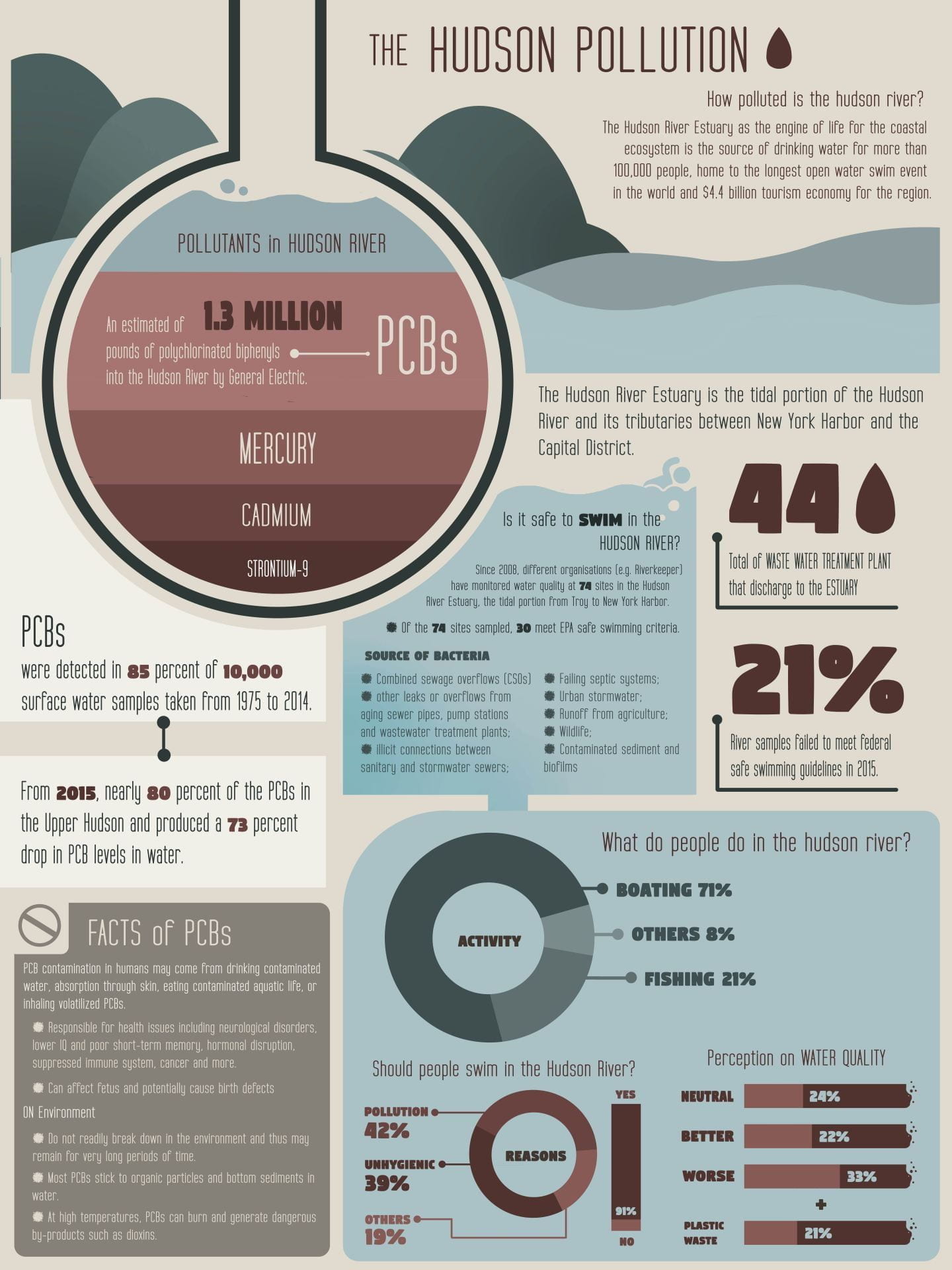Natural Water of Hudson River
Introduction
More attention is being directed on the issue of climate change regarding its possible adverse impact as the centuries pass. Due to global climate changes from human impacts, severe consequences begin following up in our urban cities, pushing the public in realizing the environmental problems at our doorstep, namely pollution. Seeing how pollution is becoming a global issue leads to our discussion of what is the most obvious issues happening around us.
Water covers 70 percent of the Earth’s surface, but only a few of them are fresh. In America, almost half of the rivers and lakes are polluted and are considered unhealthy for human activities or the nourishment of aquatic life. Water—is a fundamental element that enriches the flourish of the city in many different ways, some being used as drinking water networking across the city while some act as the border of a city as well as a cultural landmark. The main focus here is on the natural aspect of water connecting the New York City, in which Hudson River as the waterfront of New York stood out. The river is 507km long and it flows from north to south primarily through the eastern part of New York State. Despite the seemingly unsanitary status of the waterways, events like charity swims, triathlons and more are occasionally held amidst. It is acknowledged to the people that the Hudson River is contaminated with pollutants, causes can be chased back to the establishment of numerous factories lined along the river, pouring pounds of garbage and manufacturing waste. One of the most discussed cases was the contamination of Polychlorinated Biphenyls (PCB) between 1947 and 1977 by the General Electric(GE); GE facilities dumped over more than one million pounds of PCBs and polluted a huge part of the river from Hudson Falls to New York Harbor.
Objectives
Presented data of polluted Hudson river and observed events held by swim organisers have led to an inquiry of the real status of Hudson River. How polluted is the Hudson River? Has it gone worse or better? The purpose of this research is to develop a deeper understanding of this waterfront of New York City that is hardly pellucid, focusing on finding data about the level of pollution in areas of the Hudson River. Most importantly, closely observe the location itself, collecting data of it’s status.
For this project, we went on to do some online research, mainly collecting and presenting data regarding the level of pollution in the Hudson River, especially it’s biggest pollutants-PCBs. We moved on to provide the harmful effects of PCBs towards humans and the environment to acknowledge the audience the truth about PCBs. Moreover, we found information about the sources of pollutants that caused the problems. Through using observation and interviewing people who lived around Hudson River also helped us learn about views and opinions regarding different aspects such as water quality. After getting enough information about the pollution of the Hudson River, we then present the true status of the River by visualizing the data on the poster to show the audience how the issue progresses.
Roles
Hilary – Collecting and gathering data from online databases and other sources, visualizing data on poster, create survey
Gabriella – Collect data, conduct survey
Henry – Collect data, conduct survey

